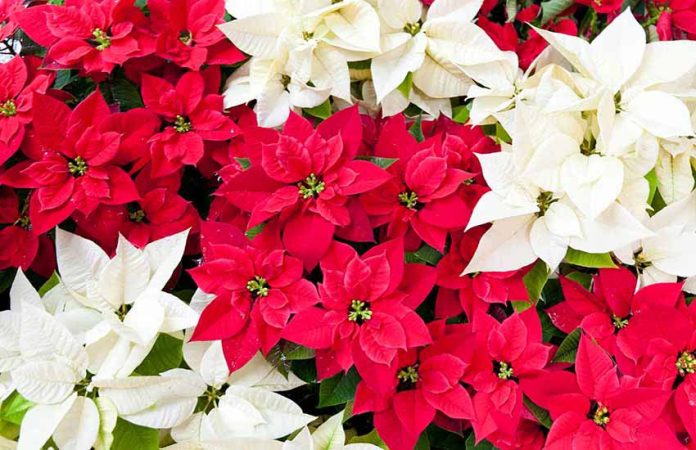There is no plant more closely associated with the holidays than the poinsettia. This ubiquitous plant can be found adorning city halls, restaurants, hotel lobbies, churches, nativity displays, town squares and homes.
Many in the United States think of the poinsettia as a flower, but it is really a shrub indigenous to Mexico. The smaller red leaves at the top of the plant, called bracts, burst into color in December and grow wild in the southern part of the country.
Poinsettias come in leaves of a variety of colors other than the traditional red — pink, red-and-white striped, yellow and white. The plant’s only flowers are the tiny golden blossoms at the center of the bracts.
Like many traditions — and much of the symbolism in Mexico — this plant can be traced back to the Mexica, who called it Cuetlaxochitl — “the mortal flower that perishes and withers like all that is pure.“ The Mexica used the milky, white sap of the Cuetlaxochitl for medicinal purposes — to reduce fevers and for poultices to restore circulation and treat infections.
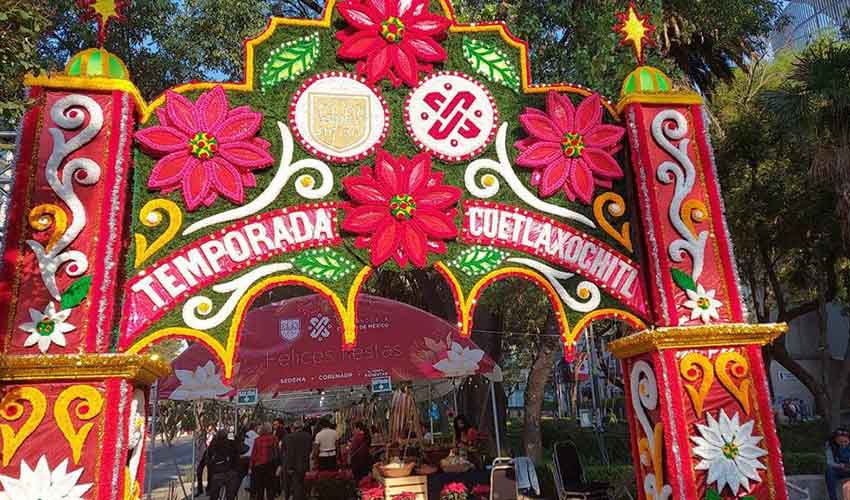
It was also used for decorative purposes: the Mexica boiled the red leaves — the bracts — to create red and purple dye for textiles and for cosmetic purposes. As a symbol of purity and the sacrifice of warriors, the Cuetlaxochitl was presented in December as a gift to the gods and was displayed in temples.
Montezuma — the last emperor of the Mexica — was so captivated by the plants that he had caravans of Cuetlaxochitl brought from the lower elevations, where they grow, to adorn the palaces in Tenochtitlán in December.
A young Mexican girl named Pepita is partially responsible for the Cuetlaxochitl’s popularity with modern-day Mexicans. By the 17th century, it had become customary to bring an offering to Jesus on Christmas Eve at his nativity scene. According to legend, Pepita and her cousin Pedro were on their way to Christmas Eve services, but Pepita was ashamed and distraught that she didn’t have any offering.
Looking around, she arranged some Cuetlaxochitl that she saw growing by the side of the road. Legend says that as she approached the altar and placed her bouquet of weeds, her tears of shame fell on the leaves, which burst into bright red flowers. It was proclaimed a miracle, and the Cuetlaxochitl became known as the flores de la Noche Buena (flowers of the holy night, or Christmas Eve). Nowadays, poinsettias are known in Mexico as nochebuenas.
Inspired by the story of Pepita, Franciscan friars in Taxco de Alarcón, Guerrero — where the plant grows in abundance — decided to make Pepita’s story and the flores de Noche Buena part of the Christmas celebrations. They began decorating the churches with nochebuena plants and incorporated them into the nativity procession.
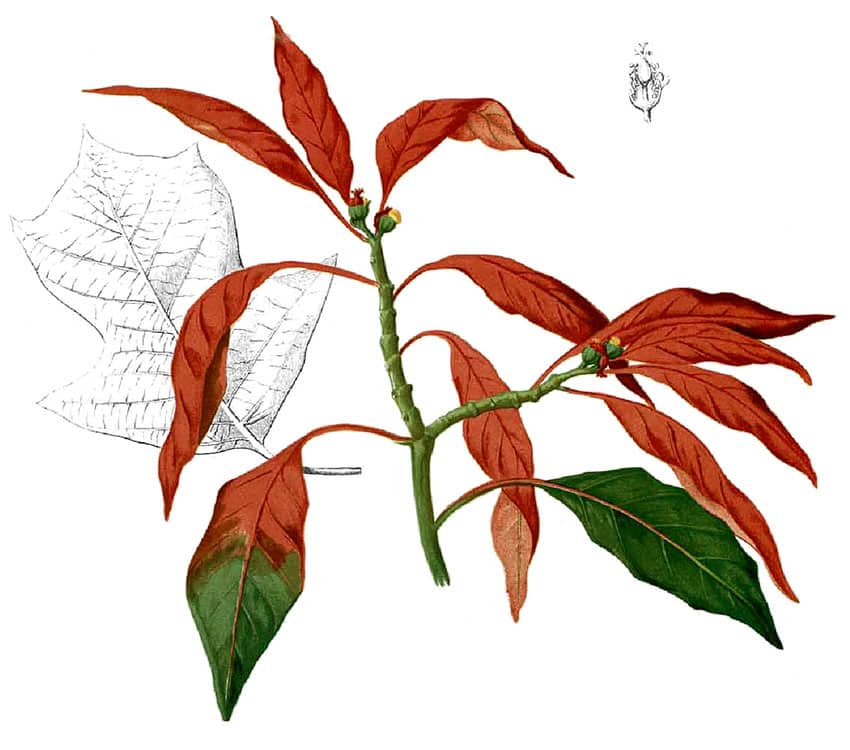
The unique shape of the red leaves came to be seen as a symbol of the Star of Bethlehem. The color of the red bracts represented the blood of Christ and his sacrifice on the cross — the white parts symbolized purity. The colors of the nochebuena plant — red, green and white — became the colors most associated with Christmas.
Although the display of poinsettia plants became widespread in Mexico, they were not found in the United States until the winter of 1828, when U.S. Ambassador to Mexico Joel Roberts Poinsett made a diplomatic visit to Taxco on behalf of U.S. President John Quincy Adams.
During a visit to Taxco, Poinsett became enchanted with this unfamiliar plant that burst into color in the month of December. He was an accomplished botanist and sent some cuttings of the plant back to his home in South Carolina, where he owned a greenhouse.
Upon his return to the States, he began cultivating the plant and sending them to friends and botanical gardens. One of his friends, John Bartram, sent the plant to Robert Buist, who owned a nursery in Philadelphia. Buist began cultivating the plant and is credited with selling the first flores de Noche Buena to the public in 1833 which he sold by its botanical name — Euphorbia pulcherrima.
By 1836, the plant was becoming known as the poinsettia, after the man who made it known outside Mexico. Historian William Prescott reinforced the plant’s name as poinsettia when he wrote of Poinsett’s discovery in his book “History of the Conquest of Mexico” in 1843.
However, the poinsettia was still largely unknown in the United States. But all that changed in the early 1900s.
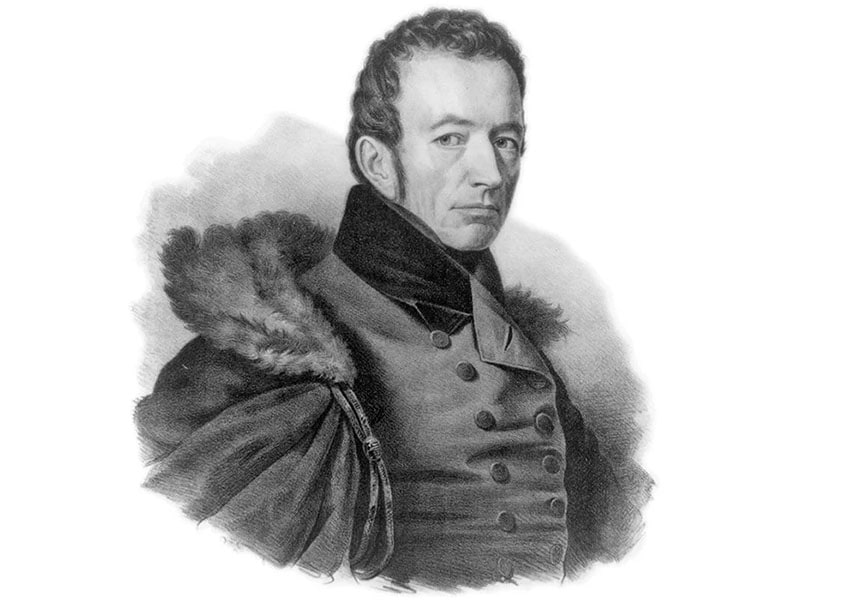
German emigrant Albert Ecke started a commercial orchard in California in 1909, the Ecke Family Ranch, to cultivate the plant. He started sending free poinsettias to decorate on-air broadcast sets of television studios for the holidays. His plan paid off, and millions began to associate poinsettias with Christmas.
Ecke Family Ranch became highly successful. Although it has changed names numerous times over the years, it is still the largest producer of poinsettias in the U.S. Every year, 70 million poinsettias are sold in the six weeks leading up to Christmas; most are sold by the Ecke Ranch, which provides nearly 80% of those sold in the United States, and over 50% of the poinsettias sold worldwide.
Today the poinsettia — once considered a weed — is the most popular Christmas plant around the world. You will see them everywhere in Mexico and the U.S., but my favorite display is at the Smithsonian in Washington, D.C., built in 1838 after British scientist James Smithson decided to bequeath US $500,000 — the equivalent of over US $15 million today — to the United States government to build an institution for the “increase and diffusion of knowledge.” Poinsett, who became a founding member of the Smithsonian, was U.S. Secretary of War at the time and strongly argued that the money should be used to build a national museum for the sciences.
If you visit the Smithsonian at Christmastime, you will see an incredible profusion of thousands of red poinsettias in the buildings and throughout the grounds — a fitting tribute to the man who gave the United States not only the “Christmas flower” but also the world’s largest education and research complex.
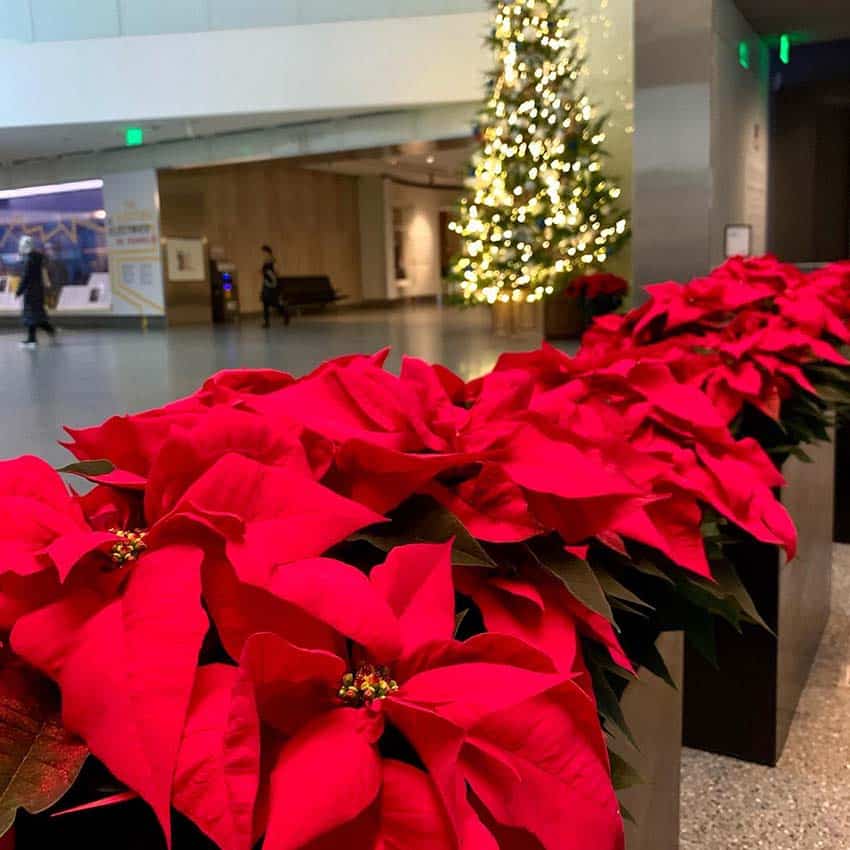
Poinsett died on December 12, 1851, and in 2002, Congress proclaimed December 12 — the day of his death — National Poinsettia Day.
Today, no Christmas scene is complete without a poinsettia, or nochebuena. However, after years of breeding, propagation and engineering, the modern poinsettias bear little resemblance to the tall, weedlike plants that still grow wild in Mexico.
Sheryl Losser is a former public relations executive and professional researcher. She spent 45 years in national politics in the United States. She moved to Mazatlán last year and works part-time doing freelance research and writing.
